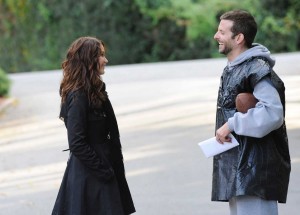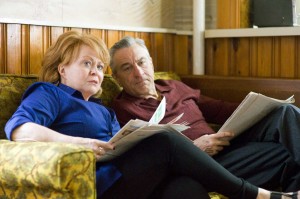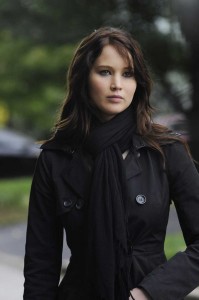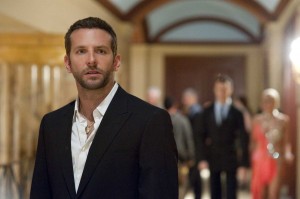![]()

The director of Spanking the Monkey (1994), Three Kings (1999) and I Heart Huckabees (2004) received a previous nomination for his directing in The Fighter (2010). With Silver Linings Playbook Russell has established a place for himself in cinematic history as a consummate storyteller.
The book by Matthew Quick caught the director’s attention five years ago and appealed to him immediately. “It was a book the late director Sidney Pollack and Anthony Minghella gave to me and I responded to it because it was very personal to me. I have a son who is 18 and has struggled with a mood disorder, which is the most tough thing I have probably faced in my life. I was looking for a story I could show to him that there are other people like him and that he’s not alone. He’s part of the world and he can have his choices and he can have a life,” said Russell.

“I’ve been a writer longer than I’ve been a filmmaker,” said Russell. “You work very hard and I think that’s when you first make the movie, when you’re writing it… and to have your writing recognized means a great deal to me. I worked very hard on it. Writing is rewriting. You have to first come from the gut and the heart. It’s not easy to get it right. It requires a lot of humility.”
The director searched for the voice of the characters in the story. Finding the rhyme of each scene was the goal for him. “You would write [the characters] one way and it would be too depressing or too extreme and then you would try to find the more magical aspects of their personalities and their interactions. It’s nice to hear the music of their interactions and the actors really embrace that,” Russell explained. He pursued the characters’ voices with a meticulous dedication. “The scene with Robert De Niro telling his son he believes in him got written and rewritten right up to the day we were shooting it.”
The city of Philadelphia served as an inspiration for Russell. Soaking up the local colors, foods, sports and common vernacular was paramount to creating the distinct personalities of the characters and the story. “We spent time and hung out in Philadelphia off and on in the summer of 2011, scouting houses in the neighborhood and working on the script and finding our locations and picking our wardrobe, [which was a] very specific wardrobe local to the area,” said Russell. “All these details are interesting to me for the story – what they eat, what they wear, what they talk like, what music they listen do, all that stuff’s important.”

Shooting took place in 33 days. It required 18-hour days to work through the 152 page script. Russell approached the film with his cinematographer Masnobu Takayanagi like a documentary filmmaker out in the wild, hunting big game. The director wanted to capture the magic and avoid any sense of a contrived, story-in-a-bottle. “I wanted it to feel intimate with the characters more than anything because it’s a movie about emotion. So for me, being intimate about the characters and feeling the movement, feeling like we’re with them is everything,” said Russell. “We shot virtually every frame of the film on a steadicam. That means the camera was in the camera operator’s hands or on his shoulder everyday to have an organic feeling where we could be with each character and move organically… I like following people and staying with them as they move through a scene, as they move through a room, as they move though a town.”

The shaping of the story continued during the editing with Jay Cassidy and Crispin Struthers
“The editing process is a very long process,” said Russell. “We edited the movie for nine months to find the right rhythm so that it feels seamless and it grabs you, and it delivers you from one moment to the next. That took a lot of work.” A score by Danny Elfman filled out the colors of the film even more. “We were very much happy with Danny Elfman’s score and also the soundtrack with Led Zeppelin, The White Stripes, Frank Sinatra, Johnny Cash, Bob Dylan, Dave Brubeck, Stevie Wonder… a lot of beautiful music found a home in the movie and speaks to the heart of the movie.”

Orchestrating the shoot as if it were a symphony created opportunity for spontaneous magic to come alive at any moment. The director would tap his camera operator’s shoulder when he wanted the camera to move. “That meant we got close to their faces and see in their eyes and feel their emotion… You should feel like a voyeur. Everything feels like an accident, but it takes a lot of work because nothing was an accident. Everything took a lot of rehearsal and a lot of performance and a lot of movement of the camera.”
In Silver Linings Playbook, Russell has gracefully directed a film where the characters dance through songs of mourning, songs of confusion, twirling, spinning, learning the dance, learning to soar, until they find the place where they belong. And the audience gets to be in cahoots.
[poll id=”20″]





